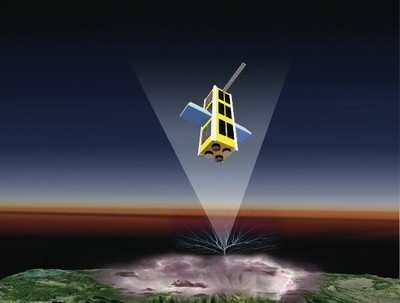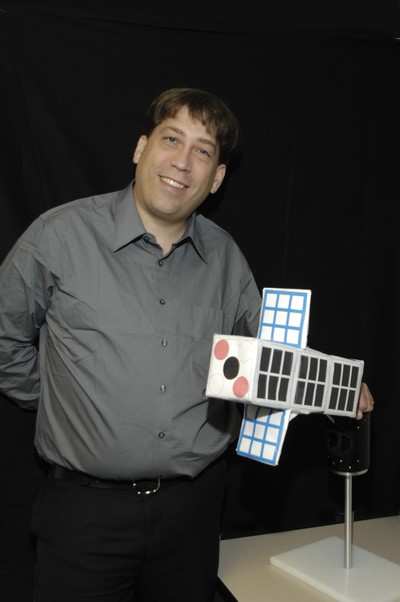CubeSat Will Study Link Between Lightning, Terrestrial Gamma
Ray Flashes
Massive energy releases occur every day in the upper reaches of
Earth's atmosphere. Lightning may give rise to these bursts of
radiation. However, unlike the well-known flashes of light and
peals of thunder familiar to Earth-dwellers, these energy releases
are channeled upward and can be detected only from space. Our
atmosphere protects us from the effects of this radiation, but the
mechanisms at work can impact Earth's upper atmosphere and its
space environment.

A new nano satellite mission, called 'Firefly,' sponsored by the
National Science Foundation (NSF) and led by NASA's Goddard Space
Flight Center in Greenbelt, MD will explore the relationship
between lightning and these sudden bursts, called Terrestrial Gamma
Ray Flashes (TGFs).
NASA's Compton Gamma Ray Observatory (CGRO) first discovered
TGFs in the 1990s. Designed to look outward at cosmic sources of
gamma rays, CGRO also caught rare but tantalizing glimpses of gamma
rays coming from Earth.
TGFs are likely produced by beams of very energetic electrons,
which are accelerated in the intense electric fields generated by
large thunderstorm systems. Before CGRO, many scientists thought
these very energetic types of radiation could be generated only
near the Sun, or in black holes, large galaxies, or neutron
stars.
"These electron beams are more powerful than any produced in
near-Earth space, and understanding their acceleration mechanisms
will shed light on a physical process that may occur on other
planets, or in astrophysical environments, as well as in the sun's
corona," said Doug Rowland, principal investigator for the Firefly
mission at NASA Goddard's Space Weather Laboratory (shown below
with a CubeSat mockup.)
Firefly will explore which types of lightning produce these
electron beams and associated TGFs. In addition, Firefly will
explore the occurrence rate of TGFs that are weaker than any
previously studied. The result will be a better understanding of
the effect that the millions of lightning flashes that occur
worldwide each day have on the Earth's upper atmosphere and
near-Earth space environment.

"This mission could provide the first direct evidence for the
relationship between lightning and TGFs, and addresses an important
research question in atmospheric electricity," said Anne-Marie
Schmoltner, head of NSF's Atmospheric Sciences Division's Lower
Atmosphere Research Section. "Identifying the source of terrestrial
gamma ray flashes would be a great step toward fully understanding
the physics behind lightning and its effect on the Earth's
atmosphere."
The NSF CubeSat program represents a new "low cost access to
space" approach to performing high-quality, targeted science on a
smaller budget than is typical of larger satellite projects, which
have price tags starting at $100 million. In contrast, the CubeSat
Firefly will carry out its science mission in a much smaller
package and at a considerably lower cost. The nano satellite is
about the size of a football (4 by 4 by 12 inches).
The cost to develop, launch, and operate Firefly for three years
during its science mission is expected to be less than $1
million.
 SpaceX to Launch Inversion RAY Reentry Vehicle in Fall
SpaceX to Launch Inversion RAY Reentry Vehicle in Fall Aero-News: Quote of the Day (04.23.24)
Aero-News: Quote of the Day (04.23.24) Aero-News: Quote of the Day (04.20.24)
Aero-News: Quote of the Day (04.20.24) ANN's Daily Aero-Linx (04.20.24)
ANN's Daily Aero-Linx (04.20.24) Aero-News: Quote of the Day (04.21.24)
Aero-News: Quote of the Day (04.21.24)




